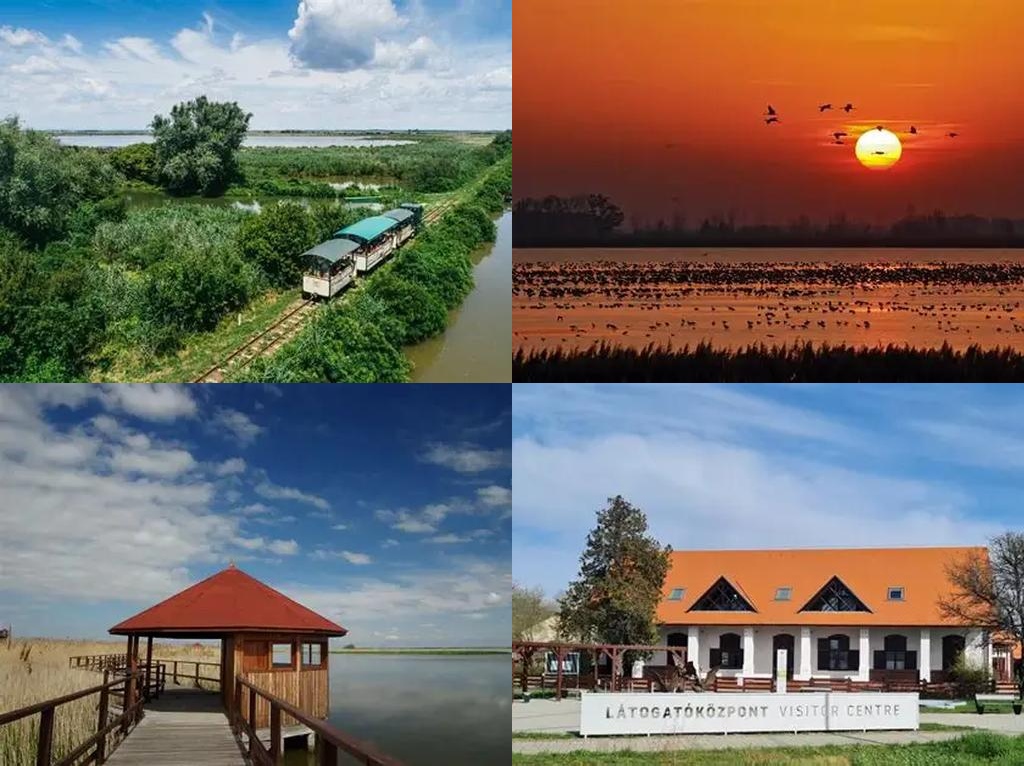
Hortobágyi Nemzeti Park sprawls across the endless plains of eastern Hungary, just a short drive from Debrecen. For those who have ever wondered what it feels like to step into a living landscape painting—vast skies arching over golden grasses, a hush broken only by birds or the distant sound of galloping hooves—this is the spot. Hungary’s first and largest national park, officially established in 1973, invites you to experience the legendary Puszta: a flat, wild steppe full of secret life and stories. Here, there are no dramatic mountain peaks, but rather a gentle immensity, a space that feels as if time herself might slow down for a quiet stroll.
You arrive, perhaps, at the famous Nine Arch Bridge—the wide stone sweep that once carried sheep and horse herders to markets, now an iconic photo stop. Past the bridge, the village of Hortobágy radiates folk culture and a stubborn authenticity. Have a look inside the traditional “csárda” roadside tavern, whose thick whitewashed walls hold centuries of laughter and stories, and where the aroma of spicy “gulyás” soup mingles with wood smoke. This is at the heart of the Great Plain’s soul: a blend of tough survival, legendary hospitality, and unexpected artistry.
But the real wonder lies out in the open pastures themselves. The Hortobágy is a UNESCO World Heritage Site, and rightfully so—it preserves not only natural habitats but an entire way of life. The shepherds still tend to the curly-horned Racka sheep and long-horned grey cattle, their uniforms unchanged for hundreds of years, as if they’d stepped straight from a folk painting. Some days you might catch a glimpse of the “csikós” horsemen, demonstrating their impossible riding skills: standing astride five horses at once, snapping bullwhips, or performing intricate dressage maneuvers passed down through generations. If your timing is right, visit during the autumn migration and witness tens of thousands of cranes painting the sky at sunrise or sunset—a spectacle that hushes even the most talkative visitors.
Birdwatchers, bring your binoculars—Hortobágy is a paradise. More than 340 species have been recorded here, and the park is especially famous for its vast populations of cranes, eagles, and the enigmatic great bustard, Europe’s heaviest flying bird. The saline steppes, marshes, and fishponds have evolved into crucial refuges where endangered animals find sanctuary from the pressures of modern life. You may spot wild horses grazing along the horizon, or shy jackals slipping through reed beds. Even if your bird identification skills are, well, “a work in progress,” the sheer diversity on display will surprise you. Local guides and naturalists offer gentle, fascinating insight, turning even a walk along a dusty track into an adventure.
For those interested in rural culture, a trip to the Shepherd Museum is essential. Inside, you’ll find intricate hand-carved staffs, embroidered costumes, and a living record of the region’s unique traditions. There’s a gentle pride in every display—the sense that everything here was made to last and was crafted with a purpose, not just a fad. Engage a local and, if you’re lucky, learn a few phrases of the distinctive dialect still alive in these parts. The park also has working windmills, centuries-old wells called “gémeskút,” and seasonal festivals featuring horseback shows, crafts markets, and folk music that stretches long into the night.
Unlike a glossy brochure paradise, Hortobágyi Nemzeti Park asks you to slow down, tune your senses, and observe the world in patient detail. The weather can shift in a heartbeat—sun blazing one moment, winds whipping low grey clouds the next. Yet, that’s all part of the experience. There’s reward in renting a bike and rolling gently across open grassland trails, or in taking a guided wagon tour across areas usually closed to the public. Between April and late October, you might witness lambing in distant folds or see frogs and dragonflies crowding the old ponds. In winter, the silence is absolute, the landscape painted with frost, and bird footprints mark the frozen earth.
Perhaps the greatest secret of Hortobágy is how its apparent emptiness is, in fact, very full: full of life, tradition, and quiet drama. It is a reminder that wilderness exists not only in far-off forests or snowy peaks, but in humble grasslands with centuries of human and wild history woven tight together. For every traveler who craves a break from hurry, from crowds, and from curated experiences, the wild heart of Hungary beats here—steady, patient, and waiting to be discovered.





